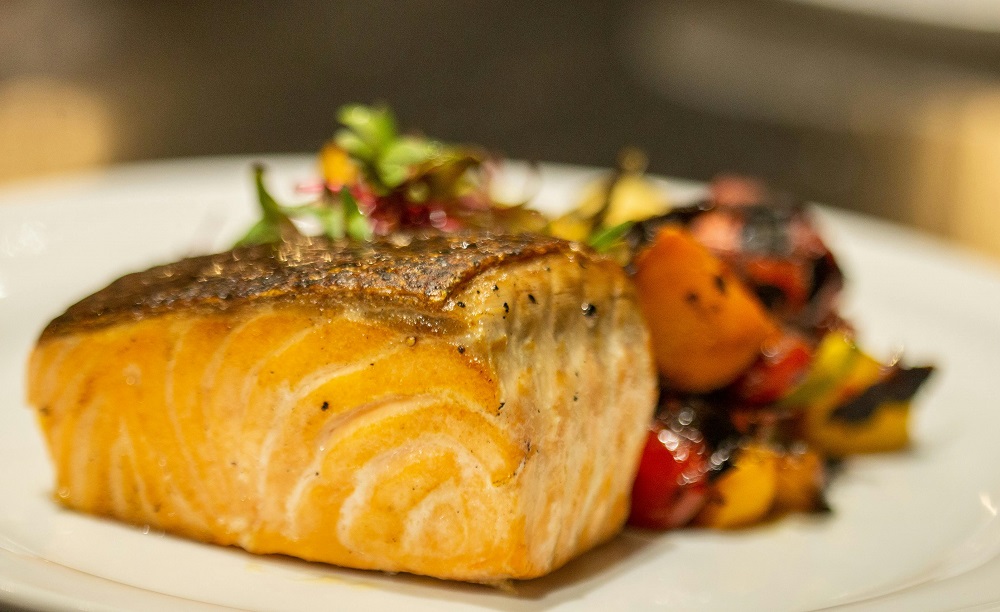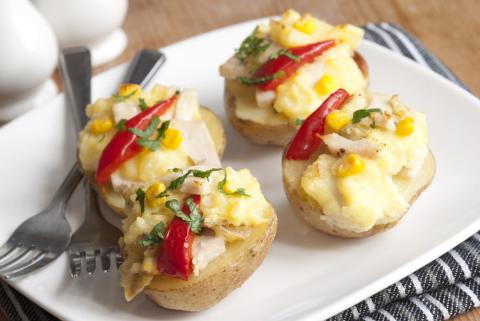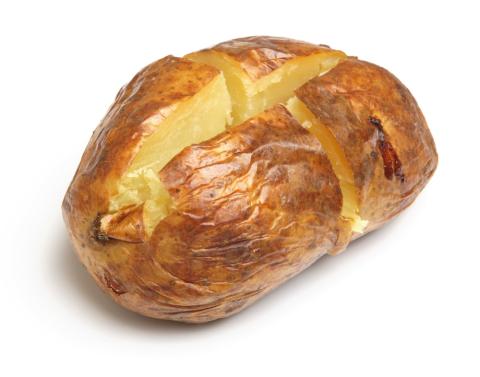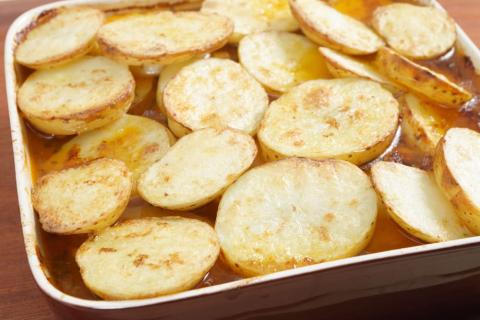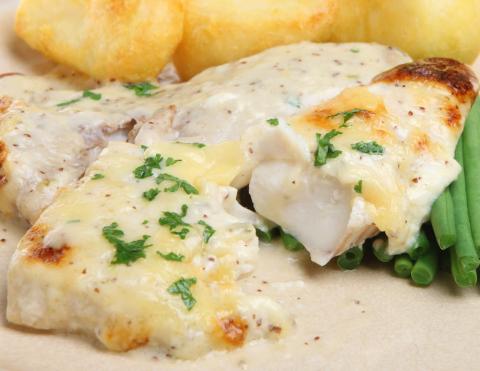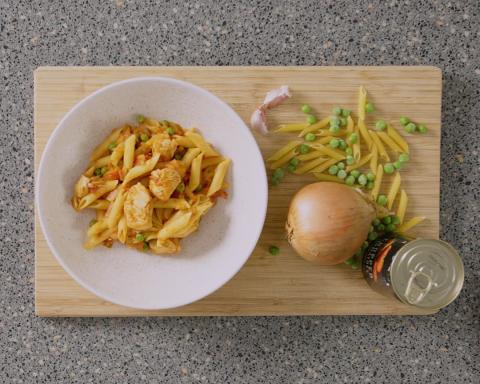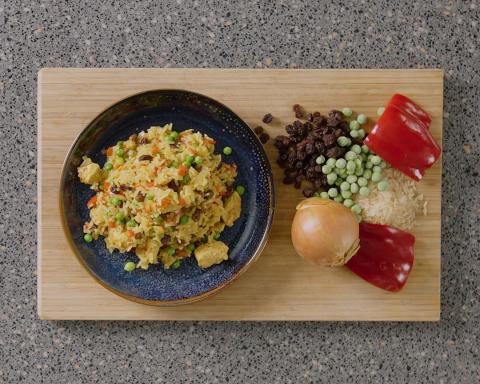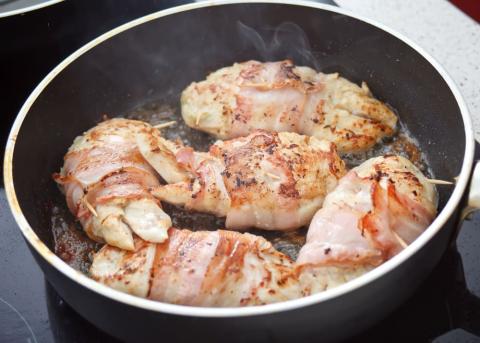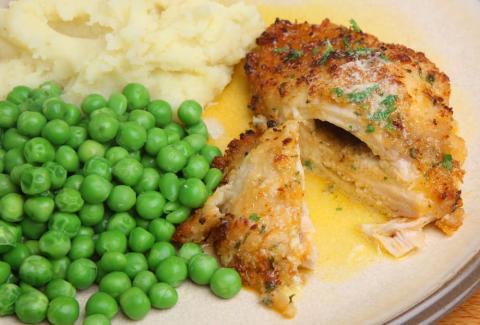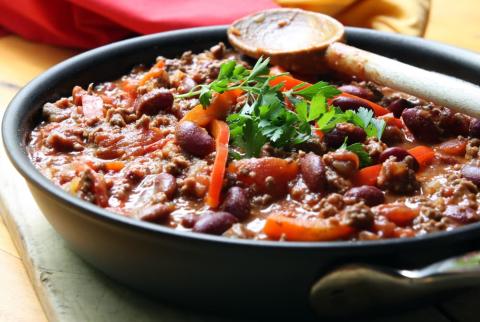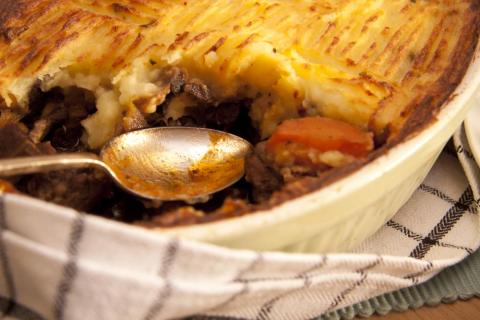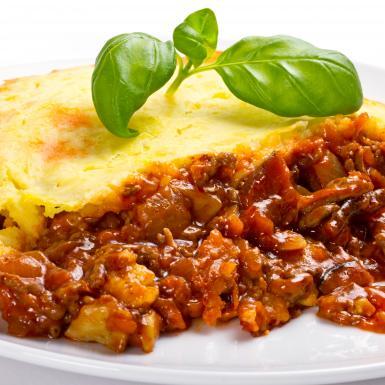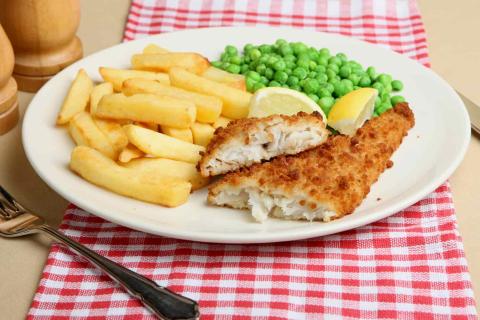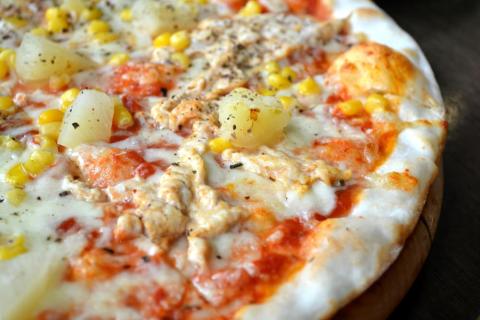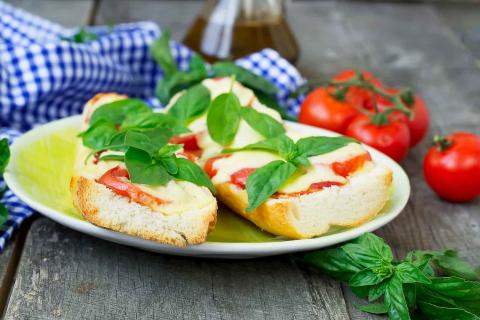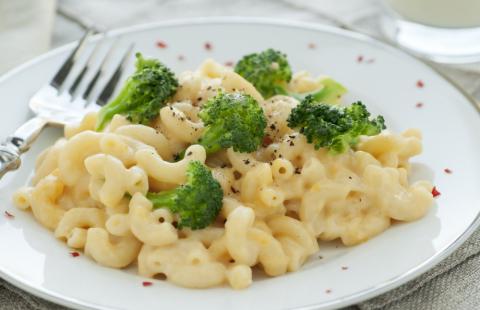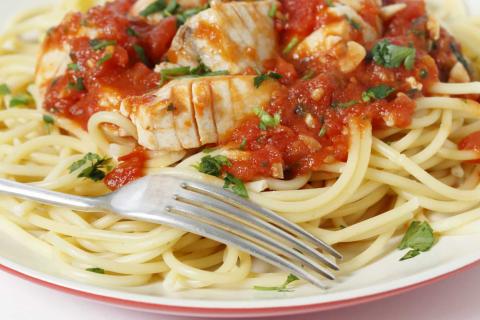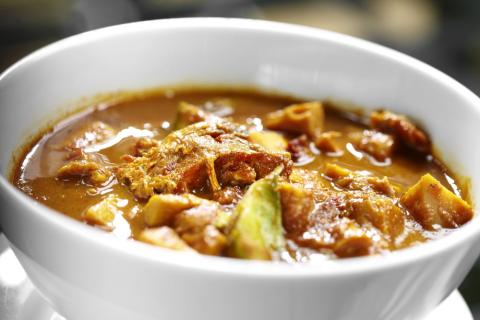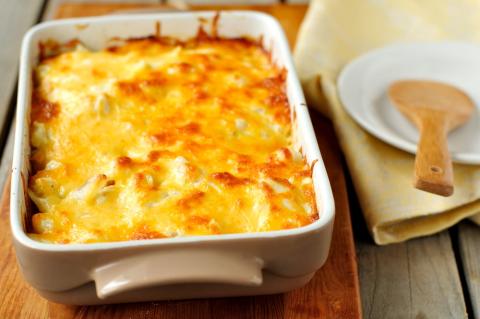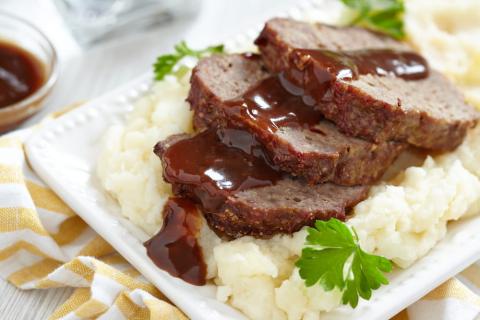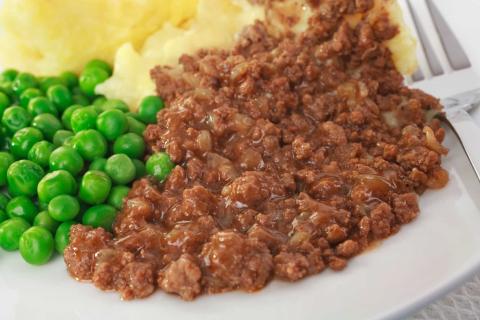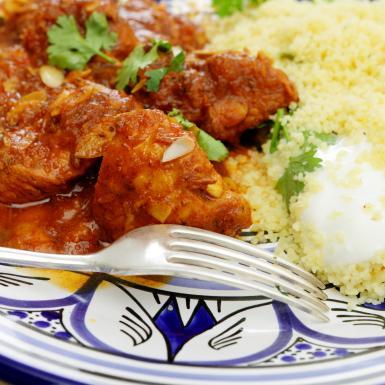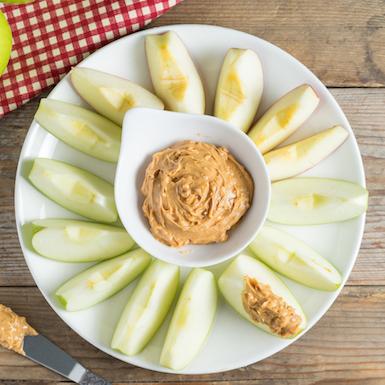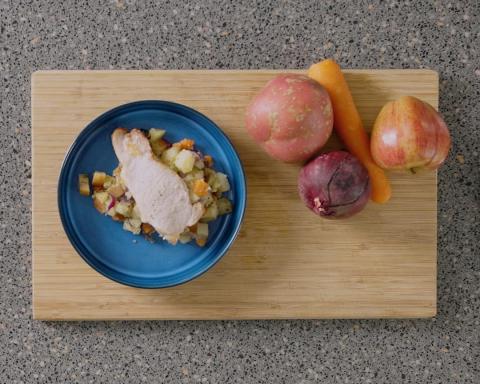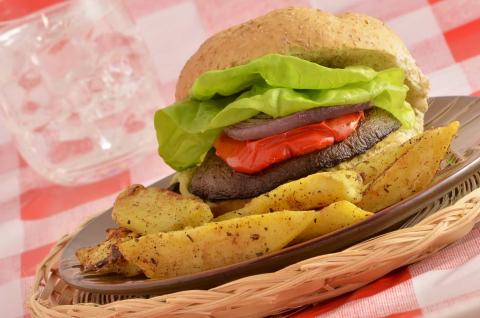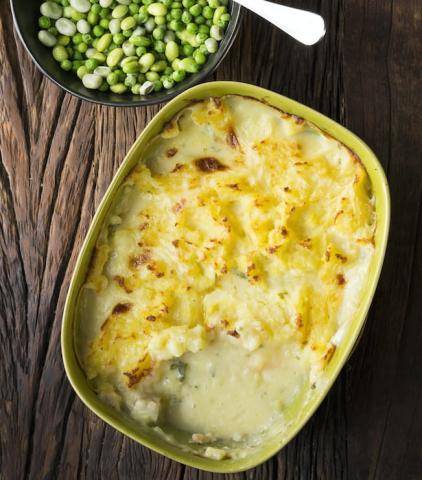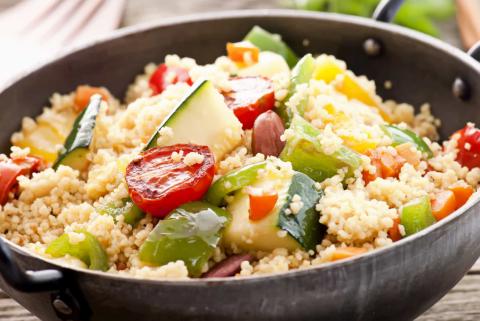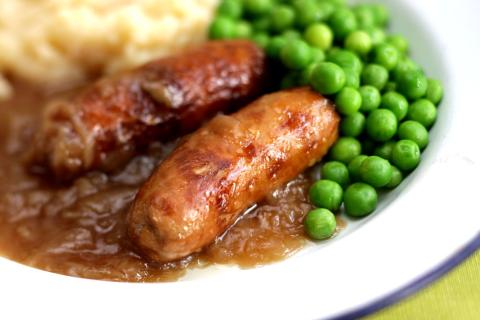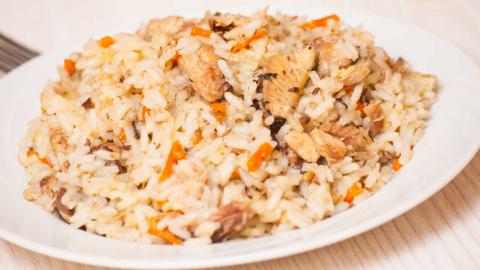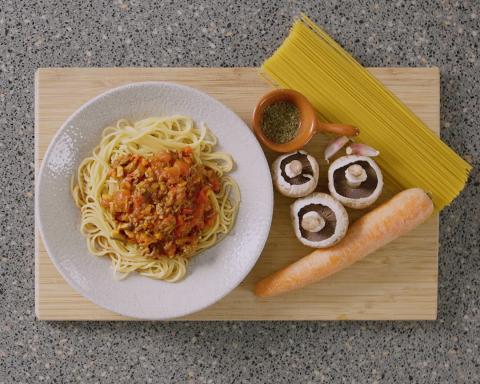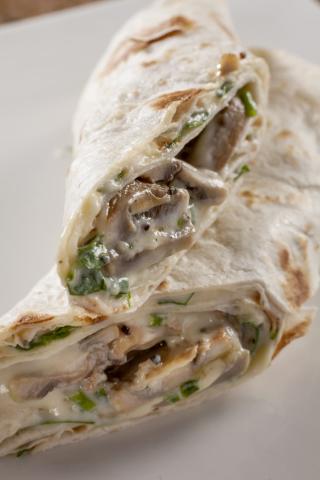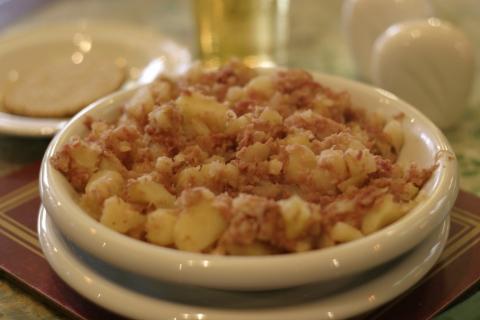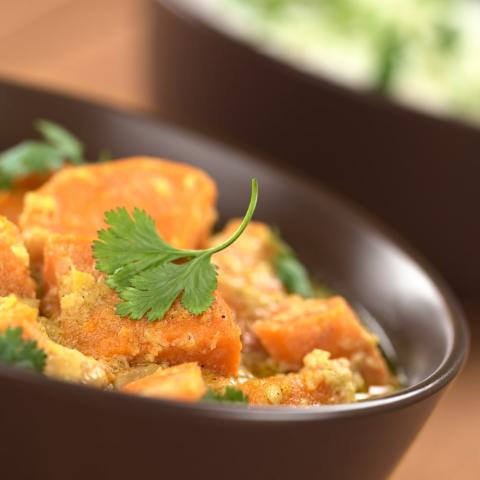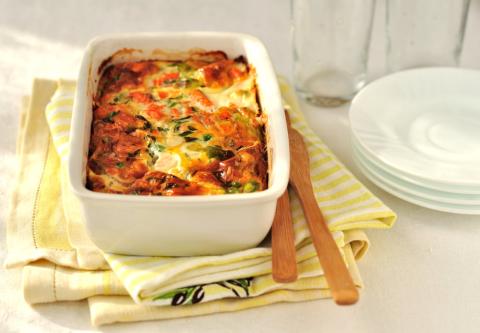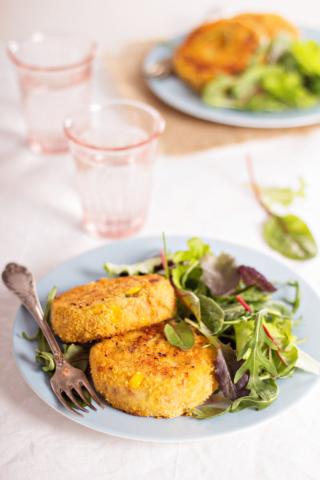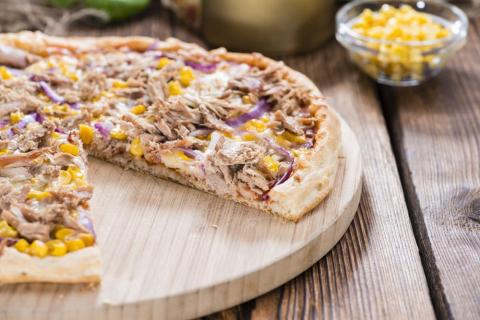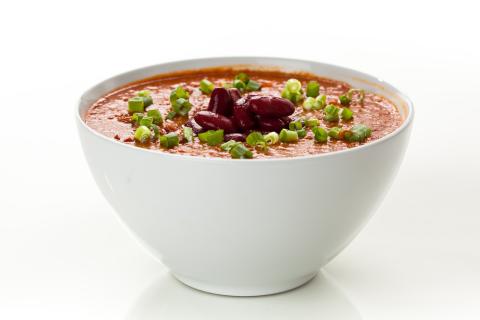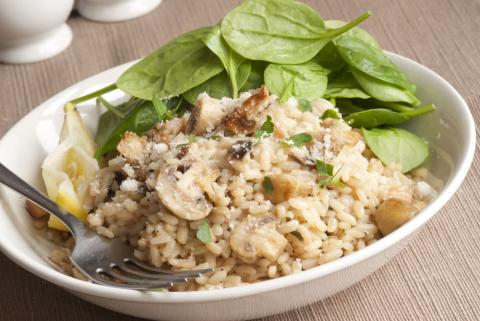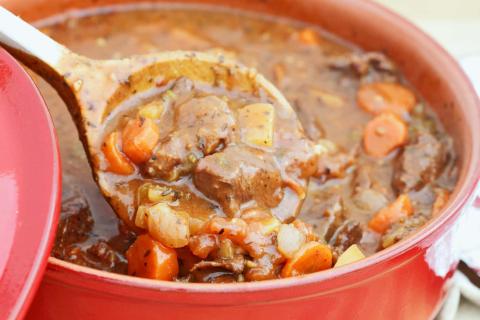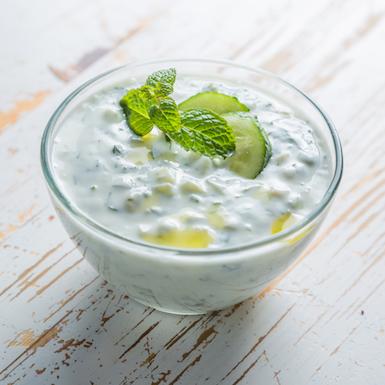- 4 Fillets (440g) Pink Salmon
- 2 Tablespoons (20g) Vegetable Oil
- 1 Teaspoon (1g) Dried Thyme
- 6 (800g) Potatoes
- 2 (280g) Carrots
- ½ (500g) Turnip
- 2 (180g) Parsnips
- 3 Teaspoons (24g) Honey
Ingredients
Allergy Disclaimer
Always check the label of each ingredient for allergy warnings.
Method
- Preheat the oven to 170°C / 150°C fan oven / 310°F / gas mark 3.
- Wash and peel potatoes and vegetables then cut into small cubes of similar size.
- Cook in a pan of boiling water for 10 minutes.
- Meanwhile line a baking tray with tin foil and place the salmon fillets onto it.
- In a small bowl pour half the oil, add the thyme and mix well. Using a pastry brush or your fingers, spread the oil on top of each fillet of salmon.
- Drain the water from the vegetables and place back into the pan. Add the remaining oil to the pan and mix to coat the vegetables.
- Spread the vegetables onto another baking tray and drizzle honey over the top. Roast in the oven for approximately 20-30 minutes until the vegetables are beginning to brown.
- The salmon should be added to the oven with approximately 15 minutes left to ensure it is ready at the same time as the vegetables.
- Once the salmon has cooked remove from oven, and if desired turn the heat up to crisp the vegetables further.
Time Saver Tips
Try roasting the potatoes and carrots without peeling.
Cost Saver Tips
Frozen salmon is often cheaper. Try with other herbs, such as basil, oregano if you don't have thyme in the cupboard.
Tips for Kids
Try taking them to your local fishmongers to choose the salmon or their favourite fish. Get them to mix the oil and herbs and brush this on to the salmon. If using fingers, wash them afterwards!
Nutritional Information
Based on a single serving of 516g (% of an adult's reference intake)
Energy
443 kcals ( 22 %)
1,863 kJ ( 22 %)
Fat
2.6 g ( 13 %)
Saturates
50 g ( %)
Sugar
15 g ( 17 %)
Salt
0.5 g ( 8 %)
Detailed nutritional information
| Per 100g | Per 516g serving | |
|---|---|---|
| Energy Kcals | 86 | 443 |
| Energy Kj | 361 | 1,863 |
| Protein | 4.8 g | 24.8 g |
| Total Fat | g | g |
| Saturated Fat | 0.5 g | 2.6 g |
| Carbohydrates | 9.7 g | 50 g |
| Total Sugars | 2.9 g | 15 g |
| NSP Fibre | 1.6 g | 8.2 g |
| Sodium | 24 mg | 124 mg |
| Salt | 0.1 g | 0.5 g |
Find out about nutritional labelling
Nutrition labels on the front of packaging
- Most of the big supermarkets and many food manufacturers display nutritional information on the front of pre-packed food.
- Front of pack nutrition labels provide information on the number of grams of fat, saturated fat, sugars and salt and the amount of energy (in kJ and kcal) in a serving or portion of a recipe.
- The labels also include information about reference intakes (expressed as a percentage) which are guidelines about the approximate amount of particular nutrients and energy required for a healthy diet.
- The colour coding tells you at a glance if the food has high (red), medium (amber) or low (green) amounts of fat, saturated fat, sugars and salt.
- The more greens on the label, the healthier the choice
- Amber means neither high nor low, so you can eat foods with all or mostly ambers on the label most of the time.
- Reds on the label means the food is high in that nutrient and these are the foods we should cut down on. Try to eat these foods less often and in small amounts.
Food shopping tips
If you’re trying to decide which product to choose, check to see if there's a nutrition label on the front of the pack. This will help you to quickly assess how your choices stack up. You will often find a mixture of red, amber and green colour coding for the nutrients. So when you're choosing between similar products, try to go for more greens and ambers and fewer reds if you want to make a healthier choice.
 Activities & Play
Activities & Play Behaviour
Behaviour Childcare
Childcare Development & Growing Up
Development & Growing Up Family, Friends & Relationships
Family, Friends & Relationships Feeding Your Baby
Feeding Your Baby Food & Eating
Food & Eating Health & Safety
Health & Safety Mental Health & Wellbeing
Mental Health & Wellbeing Money & Work
Money & Work Online Behaviour & Safety
Online Behaviour & Safety Pregnancy & First Days
Pregnancy & First Days School & Education
School & Education Sleep
Sleep

